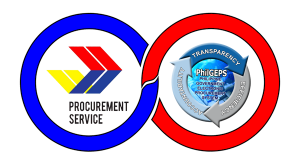Dropshipping and wholesale are the two major choices for businesses that want to sell their goods through an online marketplace or their own eCommerce shop for handling inventories and fulfilling orders. There is one significant distinction between dropshipping and procurement that retailers should be aware of. Dropshipping provides companies to contract out inventory management, fulfillment of orders, and shipment to third-party vendors. In contrast, wholesale necessitates you to handle these tasks directly. Let’s dive deeper into their differences.

What is Dropshipping?
Dropshipping is a corporate retail technique in which companies do not control and deliver their product stocks directly. Instead, the corporation forwards details such as the good’s serial number, shipment address, and purchase date to a third-party provider, who then fulfills the purchase in its place.
How does Dropshipping work?
There are two techniques for implementing drop shipping. The initial approach is to use a vendor database to find multiple wholesale suppliers. It requires much resourcefulness to get your business operations done excellently, just like other eCommerce websites. Dropshipping firms, when done correctly, may become dependable and practical counterparts to expanding merchandise enterprises to accelerate order and fulfillment processes.
As a drop shipper, your primary responsibility is to relay the orders you receive from your customer to your selected supplier. The supplier, in turn, will receive the order containing your customer’s address and information, where it will send the orders. This way, you will not require any warehouse or bulk of merchandise. You will only need a reliable partner from which you can receive and send orders to and from your customers.
Benefits of Dropshipping
Reduced Operational Costs and Capital
To start, dropshipping doesn’t involve the ownership or storage of any goods. As a result, you may save the money that other firms spend on establishing, storing, and replenishing their inventory. Dropshipping also allows you to avoid the expenses and hazards of order fulfillment and shipment since your dropshipping provider bears them.
Hassle-Free Product Addition and Replacement
Dropshipping requires you only make payments for the items that you purchase from your dropshipping supplier—which occurs only when a consumer orders the item from your online shop. As you can expect, this business strategy enables you to play around with numerous item kinds and areas with little or no risk.
This enables you to try multiple things and determine which ones perform most effectively with your store. This will be useful when it comes time to broaden your products by launching additional product lines. Unlike a traditional shop, you will not have to worry about extra inventory if a newly introduced product does not sell well.
Easy Scalability
Dropshipping your business allows you to increase your operations easily. Simply said, you must list items on your eCommerce shop and conduct comprehensive marketing activities. Your suppliers manage all order fulfillment and delivery aspects of your business. This process is relatively more convenient and suitable for smaller business sizes.
Location Flexibility
It’s possible to run and maintain your business remotely as long as you can interact with vendors and give quick support and assistance that satisfies the demands of customers. The reductions in costs for physical stores will be lower since you will not have to set up shop anywhere.
The downside of Drop Shipping
High Competition
Dropshipping can be more tempting to businesses than procurement because of the minimal capital required. Again, larger firms in your industry are more likely to charge cheaper pricing for the identical items you offer. This level of competition renders it challenging for startups and novice businesses to flourish. You may, however, succeed in the dropshipping industry with the appropriate price, inventiveness, and item distinction.
Lower Profit Margins
The most significant drawback when operating in an extremely fragmented dropshipping vertical is the small profit margins. Numerous competitive firms will put up a dropshipping shop and offer items at bottom-of-the-barrel rates in an effort to increase revenue since the overhead expenses are low. Entrepreneurs have the ability to operate on minuscule margins since they have put forth a small amount in starting the business.
Supply Chain Issues
It’s quite easy to maintain track of which things are in and out of stock if you carry all of your own products. However, when you source from multiple facilities that also fulfill orders from different sellers, inventories might fluctuate regularly.
Logistics Issues
Average and poor-quality vendors may degrade the customer experience through missing products, mishandled drop shipments, and packing or manufacturing difficulties, which can hurt your company’s image.
How Profitable is Dropshipping?
Revenue margins are typically in the range of ten to fifteen percent. You may start a lucrative dropshipping business if you identify the proper things to sell and have solid supplier connections. For dropshipping, the most vital element of your business would be working with reliable suppliers.

What is Procurement?
Procurement is the acquisition or purchase of products or services, usually for commercial purposes. Businesses are most typically connected with procurement because they must request services or acquire commodities on a wide scale. It can also cover the complete procurement procedure, which is vital for businesses prior to making a final purchase choice. Enterprises may operate on both ends of the procurement process as buyers or sellers.
Types of Procurement
Services Procurement
This may include employing individual contractors, contingency labor, human resources, or construction services. Direct and indirect purchases may be included in this type of procurement.
Goods Procurement
This category includes the purchase of tangible objects. However, it may additionally encompass products such as subscriptions. Effective management of supply chain procedures is often required for effective commodities acquisition. Direct and indirect purchases may be included.
Direct Procurement
This is the purchasing of products and services directly relevant to your organization’s output. Raw materials, applications, services, or items that directly assist the manufacture of the things that your business sells.
Indirect Procurement
Indirect procurement refers to everything that does not belong directly to the manufacture of commodities. This subset comprises office supplies, communication applications, and facility services unrelated to a particular service your firm delivers.
How does Procurement work?
The procurement process is divided into many parts. The business determines specific commodities or services that it requires and seeks out vendors who will assist it in meeting its goals. It’s critical to bear in mind that procurement is a continuous process, not a collection of separate activities. The steps in procurement are as follows…
- Identification of required goods or services
- Submitting a request for a quotation
- Assessing the selection of suppliers
- Negotiating price and terms
- Creating a purchase order
- Logistics and order fulfillment
- Completing the payment and invoicing
- Bookkeeping records
Benefits of Procurement
Affordability
Effective procurement experts cultivate positive working relationships with suppliers and are able to negotiate the best price. The primary goal of any procurement or sourcing activity is to maximize the use of external markets and suppliers to obtain an edge over competitors.
Direct Negotiation of Terms
Negotiations for the best agreement begin with analyzing the company’s needs and developing the most beneficial contracting stance. Managers continuously review and track products and services to ensure they meet specifications.
Excellent Quality Control
Firms can benefit from robust procurement rules and procedures that help them preserve standards of excellence and uniformity. This is more sustainably accomplished through suppliers who are found available through platforms such as B2B eCommerce marketplaces.
Supply Chain Security
A comprehensive procurement procedure that can account for economic and global changes provides more security for both buyers and sellers who engage in the procurement process. This way, businesses can take advantage of the affordable costs of acquisition without compromising their budget for procuring goods and services despite economic and global changes.
Wide Supplier Selection
The method entails analyzing each supplier before engaging in business with them and reassessing them on a frequent basis. Businesses that assess suppliers analyze the caliber of the supplier’s items, its capacity to satisfy the company’s demands, and the supplier’s readiness to accommodate particular organizational demands.
Cons of Procurement
Broad Customization Options
The risk is that the numerous customizing choices may entice you. A large number of variables may be included, which might be confusing and limit your business’ efficiency performance. The way to go is to determine the amount of customization that is appropriate for your business.
Onboarding Issues
Older suppliers may have difficulty comprehending modern online procurement applications. Small businesses may struggle to keep catalogs and other information up to date with the platform as well due to their size. This is why procurement processes are more effective for medium to large enterprises.
How can digitized procurement help businesses?
Technology, like practically every other aspect of business, may boost procuring organizations’ efficiency while lowering process costs by up to 30%. Using Enterprise Resource Planning (ERP) systems with procurement programming, you may also streamline processes such as obtaining bids, making orders, and paying for goods. It may also help teams assess savings and follow supplier performance more effectively. One of the most notable B2B procurement platforms you can depend on is Shoppable Business. The platform showcases a centralized system where businesses can buy or sell goods and services.
Why Become a Seller in Shoppable Business
- Access to a large customer base – allowing businesses to expand their reach and increase sales
- Increased visibility and brand awareness – a platform for businesses to showcase their products/services and potentially attract new customers
- BNPL (Buy now, Pay later) – grow your ASP; buyers/companies can apply for a loan up to ₱150,000.00
Why Become a Buyer in Shoppable Business
- Wide product selection from different categories – a one-stop-shop solution for businesses’ procurement needs
- Save company time and money – Customized orders, RFQ for specific quantities, bundles, configuration, Track their orders, view purchase history.
- Need it now but limited budget – BNPL apply and get up to ₱150,000.00

Like most businesses, there are clear differences between these two comparative business models. Both have advantages and downsides, so it’s critical to grasp the differences before determining which is best for your company. As with any type of business model or industry, it is vital to identify what your company’s needs are and its goals. Although the two names are frequently used without distinction, they are different. Dropshipping, as opposed to procurement, is transactional and typically meets more immediate demands. As entrepreneurs, your role is to select the most optimal choice for your business, whether you are a buyer or seller.









